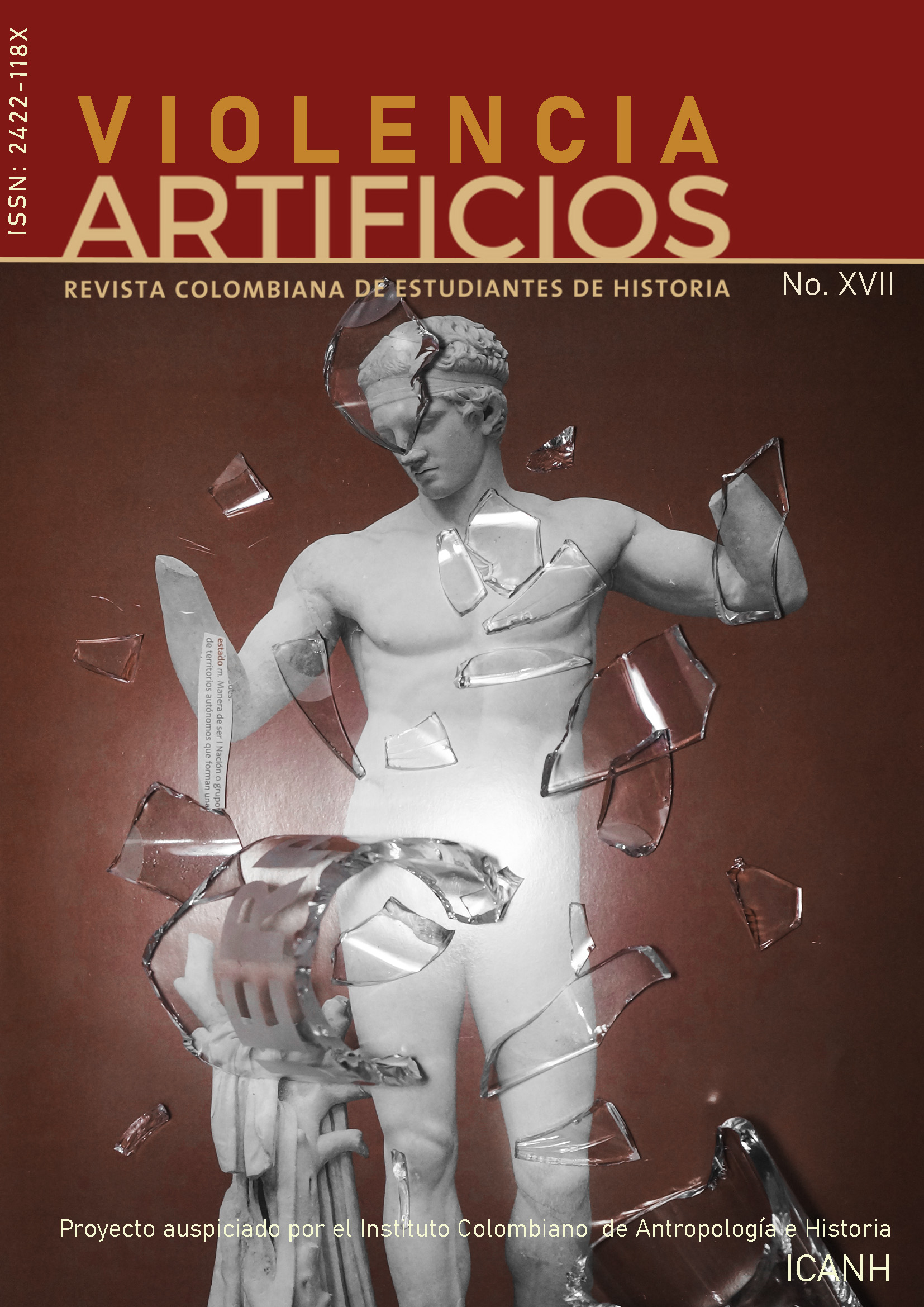The Irruption of the Stirrup in the Roman Cavalry of Late Antiquity and its Tactical Application During the Reign of the Emperor Heraclius (610-641 AD). An Historiographical Approach
DOI:
https://doi.org/10.22380/2422118X.2093Keywords:
tactical innovation, military history, late antiquity, byzantine empire, cavalry, stirrupAbstract
Tactical innovation has been one of the fundamental engines of war change and development as an activity throughout history. These changes have sealed the fate of empires and entire nations, as well as have made the difference between life and death for thousands of combatants. The objective of this article is to analyze, through historiography, the tactical importance of the use of the stirrup for the forces on horseback of the Eastern Roman Empire, and how the appropriation and application of this element established a tactical advantage against its contenders for the domination of the Middle East during the century VII A. D. Without leaving behind the importance that the stirrup has had from its massification during the wars between Romans and Sassanids to our context, where wars were fought and countries became independent fighting on horseback with or without stirrups.
Downloads
References
Bivar, A. D. H. “Cavalry Equipment and Tactics on the Euphrates Frontier.” Dumbarton Oaks Papers 26 (1972): 271–291, www.jstor.org/stable/1291323
Cameron, Averil, Bryan Ward-Perkins y Michael Whitby, eds. The Cambridge ancient history. Vol. 14. Cambridge: Cambridge University Press, 2001.
Cameron, Averil. The Mediterranean world in late Antiquity: AD 395-700. Routledge, 2015.
Cesarea, Procopio de. Historia de las guerras. Obra completa. Trad. Francisco Antonio García Romero. Madrid: Editorial Gredos, 2000.
Connolly, Peter y Carol Van Driel-Murray. “The Roman Cavalry Saddle.” Britannia, 22 (1991): 33–50, www.jstor.org/stable/526629.
Dawson, Timothy. Byzantine Cavalryman, C. 900-1204. Vol. 139. Osprey Publishing, 2009.
De Camp, L. Sprague. “Before Stirrups.” 51, n.° 2 (1960): 159–160, www.jstor.org/ stable/226847.
Dennis, George T., ed. Maurice’s Stratégikon: Handbook of Byzantine military strategy. Filadelfia: University of Pennsylvania Press, 2001.
Dien, Albert E. “The Stirrup and Its Effect on Chinese Military History.” Ars Orientalis, 16 (1986): 33–56, www.jstor.org/stable/4629341
Espejo Jáimez, Gonzalo. Estudio, traducción, anotaciones y comentarios de los panegíricos épicos, obra poética de Jorge de Pisidia. Trabajo de investigación de DEA Universidad de Granada, 2006.
Haldon, John. Byzantium at War AD 600-1453. Londres: Routledge, 2004.
Hourani, Albert. La historia de los árabes, Trad., Aníbal Leal. Barcelona: Ediciones B, 2009.
Jeffreys, Elizabeth, John F. Haldon y Robin Cormack, eds. The Oxford Handbook of Byzantine Studies. Oxford: Oxford Handbooks, 2008.
Kaegi, Walter Emil. Heraclius, emperor of Byzantium. Cambridge: Cambridge University Press, 2003.
Kaldellis, Anthony e Ian Mladjov. The wars of Justinian. Indianápolis: Hackett Publishing, 2014.
Karantabias, Mark-Anthony. “The Crucial Development of Heavy Cavalry under Herakleios and His Usage of Steppe Nomad Tactics.” Hirundo: The McGill Journal of Classical Studies, 4 (2005): 28-41.
Keegan, John. A history of warfare. Nueva York: Random House, 2011.
Littauer, Mary Aiken, Joost H. Crouwel y Peter Raulwing, eds. Selected writings on chariots and other early vehicles, riding and harness, vol. 6. Leiden: Brill, 2002.
Mauricio, emperador de Oriente. Strategikon. trad. Emilio Magaña Orúe, Julio Rodríguez González y José Ignacio de la Torre Rodríguez. Madrid: Subdirección General de Publicaciones y Patrimonio Cultural, Ministerio de Defensa, 2014.
McAllister, S. E. The sword and shield of god: Byzantine strategy and tactics under heraclius during the last persian war and fi rst arab war. ProQuest Dissertations & Theses Global: The Humanities and Social Sciences Collection (2007), https://search.proquest.com/docview/304740436?accountid=15607
Reinink, Gerrit J., ed. The Reign of Heraclius (610-641): Crisis and Confrontation. Lovaina: Peeters, 2002.
Sarantis, Alexander y Neil Christie. War and Warfare in Late Antiquity (2 vols.): Current Perspectives. Leiden: Brill, 2013.
Shahîd, Irfan. Byzantium and the Arabs in the Sixth Century. Vol. 1. Washington: Dumbarton Oaks, 1995.
Soto Chica, José. “Bizantinos, sasánidas y musulmanes. El fi n del mundo antiguo y el inicio de la Edad Media en Oriente 565-642”, tesis doctoral en Historia Medieval, Universidad de Granada, 2012.
---. Bizancio y los Sasánidas. De la lucha por Oriente a las conquistas árabes (565- 642). Granada: Centro de Estudios Bizantinos, Neogriegos y Chipriotas, 2012.
---. “La gran Guerra Romano-Persa y los orígenes de la gran Bulgaria (585-630).” Byzantion nea hellás, 36 (2017): 262-281, http://dx.doi.org/10.4067/S0718- 84712017000100262
Theophanes, the Confessor, d. ca. 818, et al. The Chronicle of Theophanes Confessor: Byzantine and near Eastern History, A.D. 284-813. Oxford: Clarendon Press, 1997.
Uribe Rueda, Álvaro. Bizancio, el dique iluminado: la concepción mística del universalismo, sus raíces judías y helénicas y su herencia cristiana. Bogotá: Instituto Caro y Cuervo, 1997.
Whately, Conor. Battles and Generals: Combat, Culture, and Didacticism in Procopius’ Wars. Leiden: Brill, 2015.
Wolf, Hieronymus. Corpus Historiae Byzantinae, 34 vol. Fráncfort, 1568. Disponible en: http://mdz-nbn-resolving.de/urn:nbn:de:bvb:12-bsb10140060-5
Downloads
Published
How to Cite
Issue
Section
License
Copyright (c) 2020 Artificios. Revista Colombiana de Estudiantes de Historia

This work is licensed under a Creative Commons Attribution-NonCommercial-NoDerivatives 4.0 International License.




